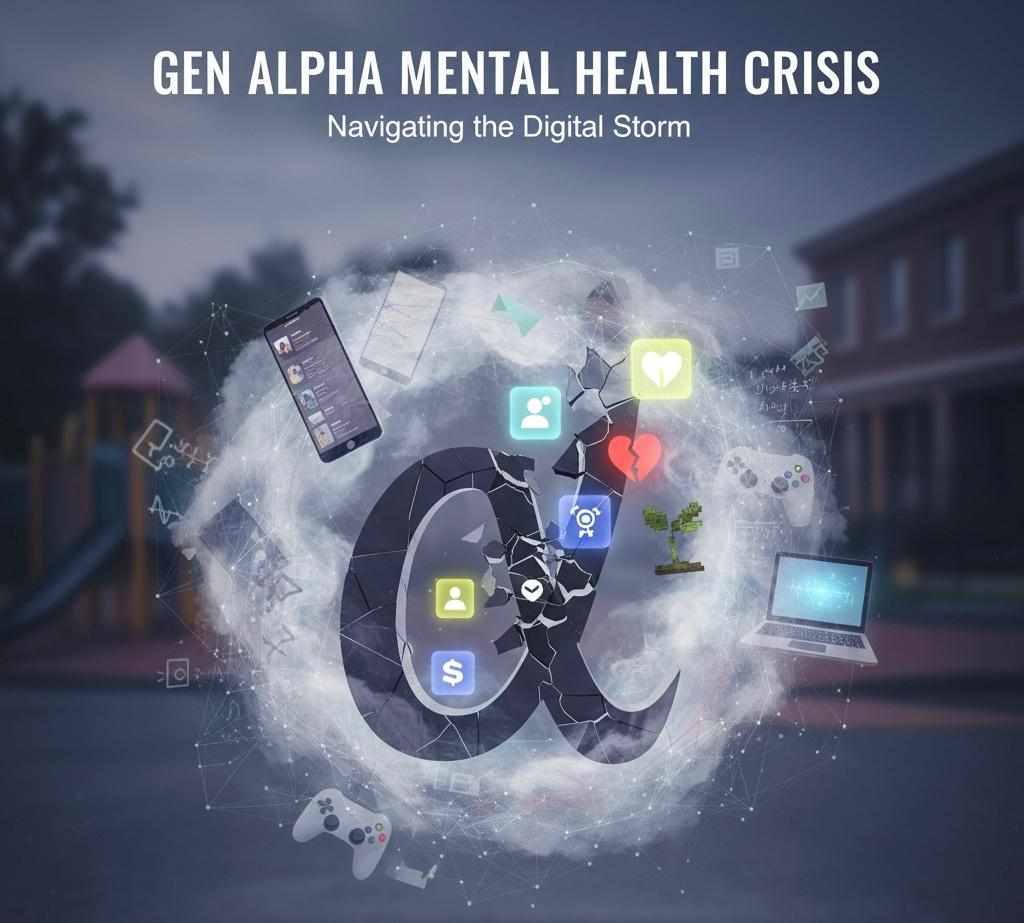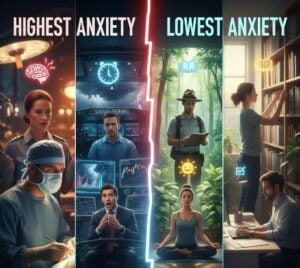Chronic pain is a persistent and often debilitating condition that affects millions of people worldwide. Unlike acute pain, which serves as a warning signal of injury or illness, chronic pain persists for weeks, months, or even years, often without a clear physical cause. The psychological impact of chronic pain is significant, influencing not only the perception of pain but also an individual’s overall quality of life. This article explores the connection between chronic pain and psychology, the role of psychological factors in pain management, and the therapeutic approaches that can help individuals cope with chronic pain.
Keywords: chronic pain, pain psychology, pain management, cognitive-behavioural therapy, Australian psychology, chronic pain treatment, psychological factors in pain
Understanding Chronic Pain
Chronic pain is typically defined as pain that lasts longer than three to six months, beyond the normal healing time of an injury or illness (Treede et al., 2019). It can arise from various conditions, including musculoskeletal disorders, neuropathic pain, migraines, and fibromyalgia, among others. However, in many cases, the exact cause of chronic pain may remain unidentified.
1. The Psychological Dimensions of Chronic Pain
The experience of chronic pain is not solely a physical phenomenon; it is deeply intertwined with psychological processes. Psychological factors can influence the perception, intensity, and duration of pain, making chronic pain a complex biopsychosocial condition.
- Pain Perception: Psychological factors such as stress, anxiety, and depression can amplify the perception of pain. For example, individuals who are anxious or depressed may experience pain more intensely due to heightened sensitivity in the nervous system (Gatchel, Peng, Peters, Fuchs, & Turk, 2007).
- Cognitive Appraisal: The way individuals think about their pain, including their beliefs and expectations, can significantly impact their pain experience. Catastrophic thinking, where individuals anticipate the worst possible outcomes, can exacerbate pain and contribute to a cycle of pain and distress (Sullivan et al., 2001).
- Emotional Response: Chronic pain is often accompanied by emotional responses such as fear, anger, and frustration. These emotions can increase muscle tension, alter pain perception, and hinder effective coping strategies (Linton, 2000).
The Role of Psychology in Pain Management
Given the significant psychological component of chronic pain, psychological interventions play a crucial role in its management. Psychological therapies aim to address the cognitive, emotional, and behavioural aspects of pain, helping individuals develop effective coping mechanisms and improve their quality of life.
1. Cognitive-Behavioural Therapy (CBT)
Cognitive-Behavioural Therapy (CBT) is one of the most widely used psychological interventions for chronic pain management. CBT focuses on changing maladaptive thought patterns and behaviours that contribute to the experience of pain.
- How CBT Works: CBT helps individuals identify and challenge negative thoughts related to their pain, such as “I can’t cope with this pain” or “This pain will never go away.” By reframing these thoughts, individuals can reduce their pain-related distress and improve their ability to function despite the pain (Ehde, Dillworth, & Turner, 2014).
- Effectiveness: Research has shown that CBT can lead to significant improvements in pain intensity, psychological distress, and physical functioning in individuals with chronic pain (Williams, Eccleston, & Morley, 2012).
2. Mindfulness-Based Stress Reduction (MBSR)
Mindfulness-Based Stress Reduction (MBSR) is a therapeutic approach that incorporates mindfulness meditation and yoga to help individuals manage pain and reduce stress.
- How MBSR Works: MBSR teaches individuals to focus on the present moment and observe their thoughts and sensations without judgement. This practice can help individuals reduce their emotional reactivity to pain and develop a more accepting attitude towards their condition (Kabat-Zinn, 1990).
- Effectiveness: Studies have found that MBSR can reduce pain severity, anxiety, and depression in individuals with chronic pain, as well as improve overall quality of life (Reiner, Tibi, & Lipsitz, 2013).
3. Acceptance and Commitment Therapy (ACT)
Acceptance and Commitment Therapy (ACT) is a form of psychotherapy that encourages individuals to accept their pain rather than attempting to avoid or control it. ACT focuses on helping individuals live a meaningful life despite their pain.
- How ACT Works: ACT helps individuals identify their values and commit to actions that align with those values, even in the presence of pain. This approach emphasises psychological flexibility and the ability to engage in life activities that matter to the individual (McCracken & Vowles, 2014).
- Effectiveness: Research suggests that ACT can lead to improvements in pain-related functioning, emotional wellbeing, and overall quality of life in individuals with chronic pain (Veehof, Oskam, Schreurs, & Bohlmeijer, 2011).
4. Biofeedback
Biofeedback is a technique that helps individuals gain control over physiological processes that are typically involuntary, such as heart rate, muscle tension, and skin temperature. It is often used as part of a broader pain management program.
- How Biofeedback Works: During biofeedback sessions, individuals are connected to sensors that monitor physiological functions. They receive real-time feedback on these functions and learn techniques to regulate them, such as deep breathing or progressive muscle relaxation (Flor, 2002).
- Effectiveness: Biofeedback has been shown to be effective in reducing pain and improving coping strategies in individuals with chronic pain, particularly in conditions such as migraines and tension headaches (Nouwen & Freeman, 2006).
The Biopsychosocial Model of Chronic Pain
The biopsychosocial model is the predominant framework for understanding chronic pain. This model posits that pain is influenced by a combination of biological, psychological, and social factors.
1. Biological Factors
Biological factors include the underlying physical causes of pain, such as tissue damage, nerve injury, or inflammation. These factors are often the focus of medical interventions, such as medications, surgery, or physical therapy.
2. Psychological Factors
Psychological factors include emotions, thoughts, and behaviours that can influence the perception and management of pain. Psychological interventions aim to address these factors to reduce pain-related distress and improve coping strategies.
3. Social Factors
Social factors include the impact of pain on an individual’s relationships, work, and social life. Social support, cultural beliefs about pain, and access to healthcare can all influence how individuals experience and manage chronic pain.
The Impact of Chronic Pain on Mental Health
Chronic pain can have a profound impact on an individual’s mental health, leading to conditions such as depression, anxiety, and insomnia.
1. Depression and Chronic Pain
There is a well-established link between chronic pain and depression. Individuals with chronic pain are at a higher risk of developing depression, and the presence of depression can exacerbate the experience of pain.
- Vicious Cycle: Depression can lead to a decrease in physical activity and social engagement, which can worsen pain symptoms and further contribute to feelings of hopelessness and helplessness (Bair, Robinson, Katon, & Kroenke, 2003).
- Treatment Implications: Treating both pain and depression concurrently is essential for improving outcomes. Psychological therapies such as CBT are effective in addressing both conditions (Ehde et al., 2014).
2. Anxiety and Chronic Pain
Anxiety is another common comorbidity in individuals with chronic pain. The uncertainty and unpredictability of pain can lead to heightened anxiety and fear of exacerbating the pain.
- Catastrophising: Anxiety often leads to catastrophic thinking, where individuals expect the worst possible outcomes from their pain, leading to increased distress and avoidance behaviours (Sullivan et al., 2001).
- Therapeutic Approaches: Techniques such as relaxation training, exposure therapy, and mindfulness can help individuals manage anxiety and reduce its impact on their pain experience (Kabat-Zinn, 1990).
Accessing Psychological Support for Chronic Pain in Australia
In Australia, individuals with chronic pain can access psychological support through various healthcare channels, including public and private services.
1. Medicare Rebates
Under the Better Access initiative, Australians can receive Medicare rebates for psychological services, including those for chronic pain management, when referred by a general practitioner (GP). This initiative covers a certain number of sessions per year with a registered psychologist, social worker, or occupational therapist (Australian Government Department of Health, 2021).
2. Pain Clinics
Many hospitals and healthcare centres in Australia have workd pain clinics that offer multidisciplinary care for chronic pain. These clinics often include psychologists as part of the treatment team, providing integrated care that addresses both the physical and psychological aspects of pain (Australian Pain Society, 2019).
3. Private Health Insurance
Private health insurance may cover additional psychological services or offer access to pain management programs that include psychological support. The level of cover varies depending on the insurance plan.
4. Online Resources
There are several online resources available to Australians seeking psychological support for chronic pain, including telehealth services and digital mental health platforms. These resources can provide convenient access to therapy, particularly for those in rural or remote areas (King et al., 2021).
Conclusion
Chronic pain is a complex condition that involves both physical and psychological components. The psychological aspects of chronic pain, including how individuals perceive, think about, and respond to their pain, play a crucial role in the overall pain experience. Psychological interventions such as Cognitive-Behavioural Therapy, Mindfulness-Based Stress Reduction, Acceptance and Commitment Therapy, and Biofeedback are effective in managing chronic pain and improving quality of life. In Australia, individuals with chronic pain can access these services through various healthcare channels, including Medicare, pain clinics, and private health insurance. Understanding the connection between chronic pain and psychology is essential for developing comprehensive treatment plans that address all aspects of the pain experience.
References
- Australian Government Department of Health. (2021). Better Access initiative. Retrieved from https://www.health.gov.au/initiatives-and-programs/better-access-initiative
- Australian Pain Society. (2019). Pain management services directory. Retrieved from https://www.apsoc.org.au/Pain_Services_Directory
- Bair, M. J., Robinson, R. L., Katon, W., & Kroenke, K. (2003). Depression and pain comorbidity: A literature review. Archives of Internal Medicine, 163(20), 2433-2445.
- Ehde, D. M., Dillworth, T. M., & Turner, J. A. (2014). Cognitive-behavioral therapy for individuals with chronic pain: Efficacy, innovations, and directions for research. American Psychologist, 69(2), 153-166.
- Flor, H. (2002). The use of biofeedback in the treatment of chronic pain. Neurological Sciences, 23(1), 59-63.
- Gatchel, R. J., Peng, Y. B., Peters, M. L., Fuchs, P. N., & Turk, D. C. (2007). The biopsychosocial approach to chronic pain: Scientific advances and future directions. Psychological Bulletin, 133(4), 581-624.
- Kabat-Zinn, J. (1990). Full catastrophe living: Using the wisdom of your body and mind to face stress, pain, and illness. Delacorte.
- King, J., Edwards, N., Corbett, K., & Williams, S. (2021). Telehealth support for chronic pain management: Benefits, barriers, and opportunities. Australian Health Review, 45(3), 348-353.
- Linton, S. J. (2000). A review of psychological risk factors in back and neck pain. Spine, 25(9), 1148-1156.
- McCracken, L. M., & Vowles, K. E. (2014). Acceptance and commitment therapy and mindfulness for chronic pain: Model, process, and progress. American Psychologist, 69(2), 178-187.
- Nouwen, A., & Freeman, S. (2006). Biofeedback as a treatment for headaches: A meta-analysis. Pain, 67(1), 31-40.
- Reiner, K., Tibi, L., & Lipsitz, J. D. (2013). Do mindfulness-based interventions reduce pain intensity? A critical review of the literature. Pain Medicine, 14(2), 230-242.
- Sullivan, M. J., Thorn, B., Haythornthwaite, J. A., Keefe, F., Martin, M., Bradley, L. A., & Lefebvre, J. C. (2001). Theoretical perspectives on the relation between catastrophizing and pain. The Clinical Journal of Pain, 17(1), 52-64.
- Treede, R. D., Rief, W., Barke, A., Aziz, Q., Bennett, M. I., Benoliel, R., … & Wang, S. J. (2019). Chronic pain as a symptom or a disease: The IASP classification of chronic pain for the International Classification of Diseases (ICD-11). Pain, 160(1), 19-27.
- Veehof, M. M., Oskam, M. J., Schreurs, K. M., & Bohlmeijer, E. T. (2011). Acceptance-based interventions for the treatment of chronic pain: A systematic review and meta-analysis. Pain, 152(3), 533-542.
- Williams, A. C., Eccleston, C., & Morley, S. (2012). Psychological therapies for the management of chronic pain (excluding headache) in adults. Cochrane Database of Systematic Reviews, (11).
How to get in touch
If you or your NDIS participant need immediate mental healthcare assistance, feel free to get in contact with us on 1800 NEAR ME – admin@therapynearme.com.au.







